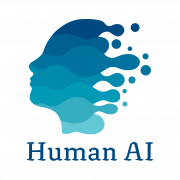Artificial intelligence and socio-emocional education
An educational alliance with human impact
Social-emotional education with artificial intelligence is a reality in many classrooms. Far from dehumanizing learning, technology can help us to strengthen what is essential: the integral formation of people.
In our latest webinar, “Social-emotional competencies and AI: a possible alliance?”, we brought together professionals from the education sector to reflect, with real examples, on how artificial intelligence in the classroom can become an ally to develop emotional and social competencies.
An open conversation moderated by our advisor and expert in educational trends María Zalbidea, and with the participation of centers that are already applying technology with a human purpose: from Argentina, Susana Giambruni, director of Pedagogical Innovation of Red Itínere; from Spain, Fernando García, teacher at Colegio Irabia and author of the book Viva la adolescencia; and teachers Cristóbal S. Sánchez and José María García Nieto, from CIFP Carlos III de Cartagena, referents in the application of AI in Vocational Training.
1. Emotional education is not a luxury, it’s a necessity
As María Zalbidea recalled at the opening of the meeting: “Social-emotional competencies are no longer a complement, they are a pillar of meaningful learning and well-being”.
A statement shared by all the speakers, who stressed the importance of working on empathy, self-regulation, assertiveness or flexibility from an early age and in a cross-cutting manner in educational centers.
2. How does AI fit in this scenario?
From Red Itínere, Susana Giambruni explained how they integrated Human AI to reinforce a process they had already been carrying out with psycho-pedagogical teams:
“AI allows us to have a snapshot of the student’s emotional state almost in real time. It doesn’t replace the human link, but it does help us to intervene earlier and better.”
At CIFP Carlos III, José María García Nieto highlighted how Human AI optimized the analysis they had been performing manually:
“We have found that socioemotional competencies have a direct impact on professional success. Without AI, we would not have been able to measure so many students in such a short time with such reliability.”
For his part, Fernando García shared how they use AI-generated reports to improve the personalization of accompaniment:
“AI does not pigeonhole, it orients. It allows us to detect talents and areas for improvement, and design personalized activities from tutoring and subjects.”
3. From figures to action: real experiences in the classroom
In all the participating centers, the data generated by the tool are transformed into concrete actions.
Cristóbal S. Sánchez explained how, after identifying low levels in competencies such as responsibility or emotional regulation, they design specific activities to reinforce them in the classroom.
In Red Itínere, they work with three key stages (3rd, 5th and 6th year of secondary school), accompanying students in their life project and guiding their professional choice process with emotional evidence.
4. Overcome resistance: ethics, trust, and training
“At first there was reluctance on the part of management teams and families,” Susana recalled. “Questions about privacy, usefulness or the sense of automated text analysis. But with scientific evidence and accompaniment, we generated trust.”
In Irabia, Fernando shared a common challenge: knowing how to translate the results. “We always find something positive in each student. That raises self-esteem and gives meaningful guidance.”
In all three centers, the key to progress was clear: training, accompaniment and scientific evidence.
5. What competencias are at the center
The most recurrent competencies in the student profiles were:
- Commitment to others, especially in educational contexts with solidarity projects.
- Creativity and open-mindedness, confirmed by parallel research.
- Anxiety and low self-esteem, as frequent alerts that previously went unnoticed.
“The emotional map provided by AI allows us to intervene before the learner asks for help. It helps us to care even for those who don’t draw attention to themselves.” – Susana Giambruni
6. From innovation to institutionalization
From CIFP Carlos III, José María and Cristóbal were clear: “These tools cannot remain a pilot experience. We need to integrate them into the curriculum, institutionalize the work with emotional competencies and give time and training to teachers.”
In addition, they reminded that emotional development is not only for students: “We must also take care of our own competencies as educators.”
Teach with figures and humanity
This webinar demonstrated that socioemotional education with artificial intelligence can be ethical, personalized, and deeply human. A practical demonstration of how technology, well used, can enhance the most human mission of education: to accompany each person in his or her integral development.
Check out the full webinar in the Spanish version here:






